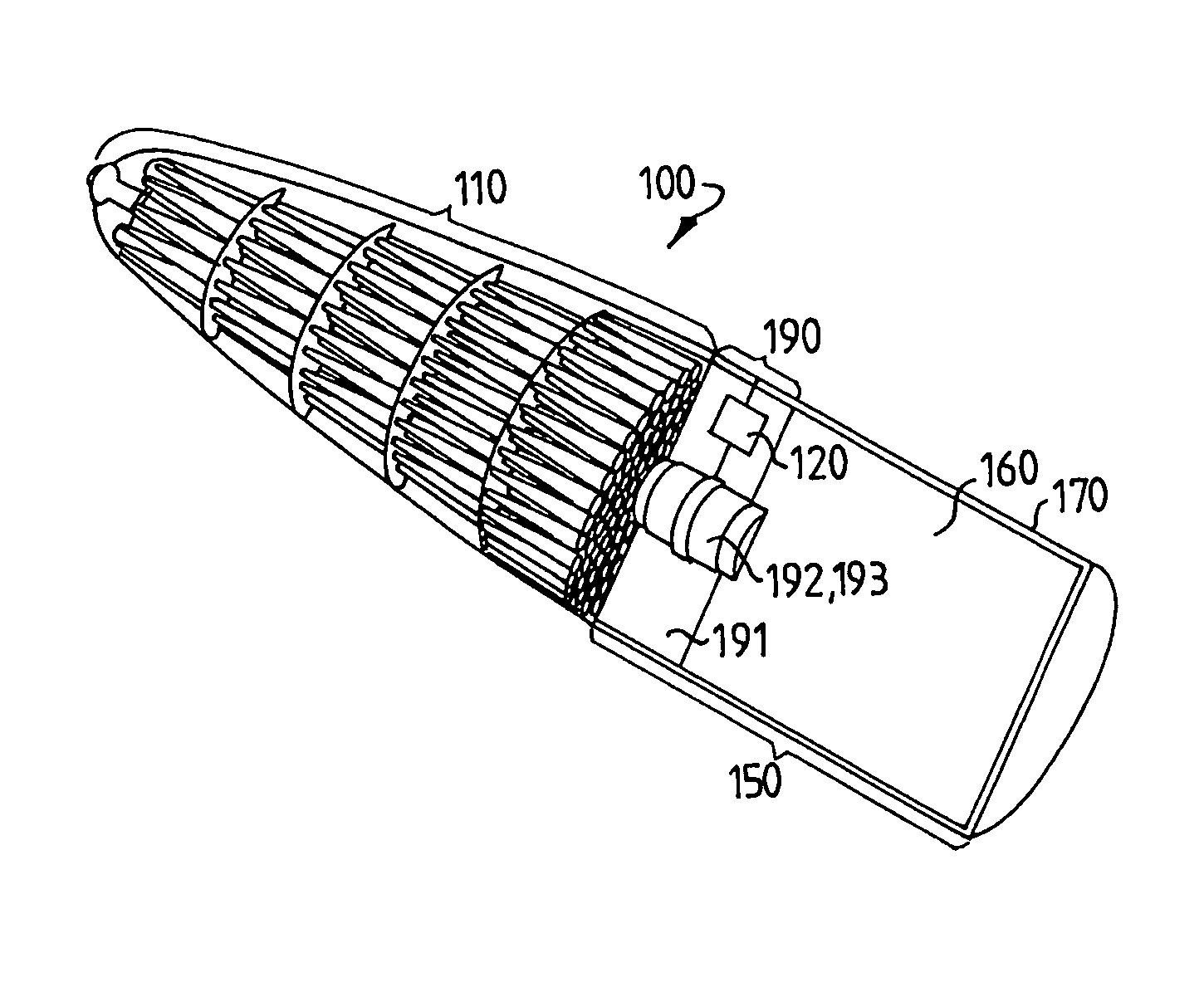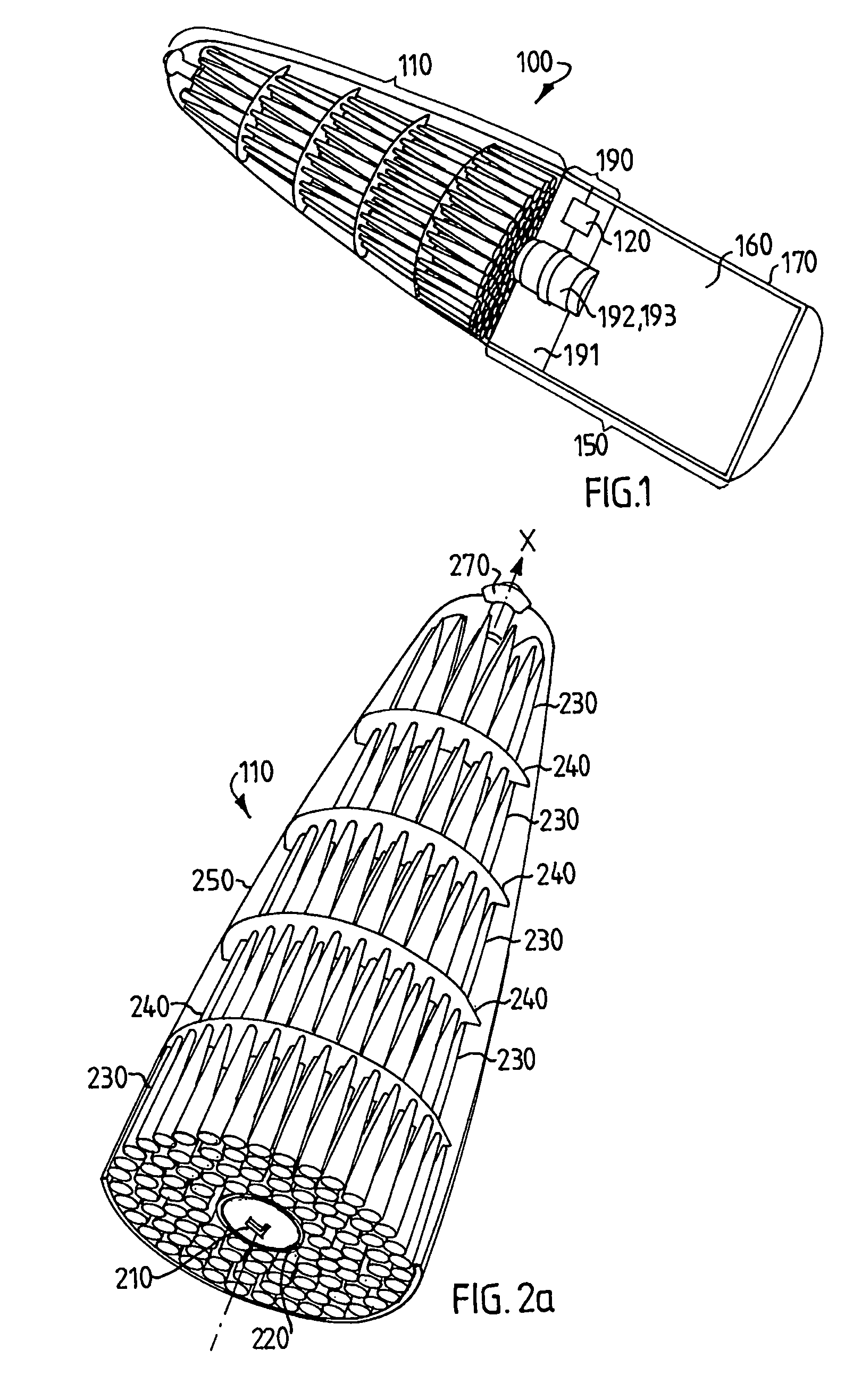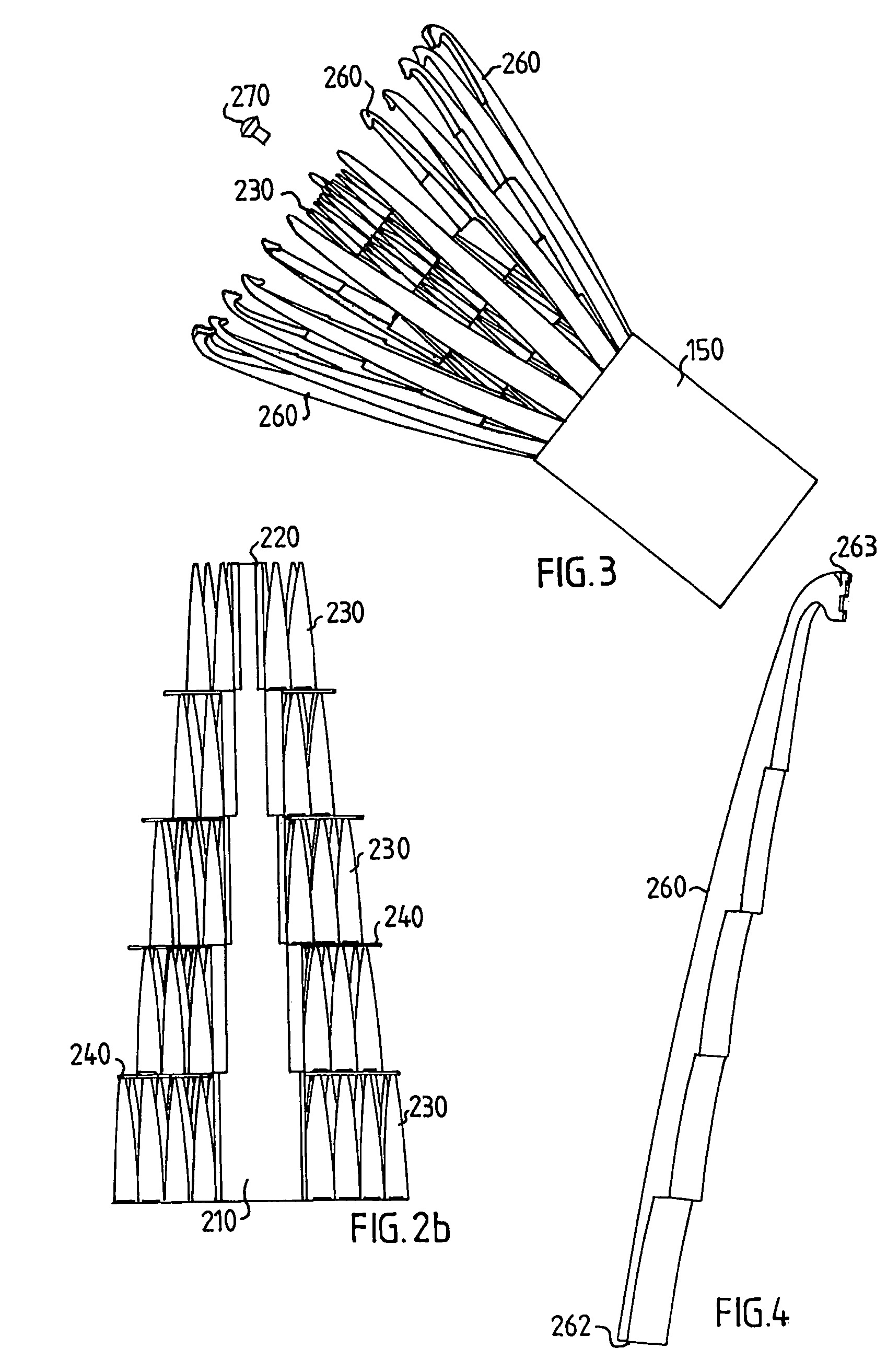Warhead
a technology of warheads and missiles, applied in the field of warheads, can solve the problem that the number of missiles is restricted to defeating relatively large numbers
- Summary
- Abstract
- Description
- Claims
- Application Information
AI Technical Summary
Benefits of technology
Problems solved by technology
Method used
Image
Examples
Embodiment Construction
[0039]FIG. 1 shows a schematic view of a warhead. 100 according to one embodiment of the invention. The warhead as described here comprises three sections. A first section 110 is a main portion. The first section may also be termed a first module. A second section 150 comprises an explosive charge 160 enclosed by a casing 170. The second section may also be termed a second module. A third section 190 comprises, among other things, a detonation-preventing barrier 191 between the first and second section. The third section 190 comprises, among other things, a control element 120 for controlling the detonation, and a booster 192 and priming device 193. The third section is incorporated into the second module.
[0040]According to one embodiment the total weight of the warhead is in the range from 1 to 5 kg. The total weight of the warhead is preferably in the range from 3 to 4 kg. According to one embodiment the total weight of the warhead is in the range from 5 to 10 kg. According to one...
PUM
 Login to View More
Login to View More Abstract
Description
Claims
Application Information
 Login to View More
Login to View More - R&D
- Intellectual Property
- Life Sciences
- Materials
- Tech Scout
- Unparalleled Data Quality
- Higher Quality Content
- 60% Fewer Hallucinations
Browse by: Latest US Patents, China's latest patents, Technical Efficacy Thesaurus, Application Domain, Technology Topic, Popular Technical Reports.
© 2025 PatSnap. All rights reserved.Legal|Privacy policy|Modern Slavery Act Transparency Statement|Sitemap|About US| Contact US: help@patsnap.com



